The year 2017 turned out to be the hottest in the history of meteorological observations within the last 150 years. We don’t know how precise the predictions of scientists are, but we know for sure that we haven’t brought much good to our planet so far.
Experts define nature’s “mood swings” as a nervous climate. The main reason for such atypical behavior is the overheating of Arctica, causing Greenland’s ice sheets to disappear rapidly. It is happening 2 times faster now than it was 10 years ago.
We at Bright Side have collected a list of official facts showing nature’s most current “bad mood”. And in this case, only humans are to blame.
Abnormal heat makes people adjust to new conditions. The ambient temperature in Arizona reached 120°F, and 130°F in Kuwait.
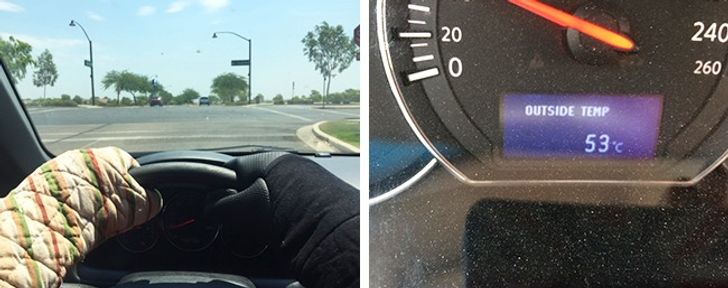
Due to the impact of chemical compounds of anthropogenic origins, the ozone layer of our planet collapses. Not only does this layer prevent Earth from losing oxygen but it also protects us from harmful ultraviolet radiation. That’s the reason why meteorologists around the world keep recording an abnormal temperature increase.
Abnormal cold in regions where it’s not typical

It seems that the whole world has seen the photos of alligators hibernating in ice as well as iguanas that have fallen into a state of anabiosis. While alligators are adjusted to such dramatic changes in temperature, iguanas are not that cold-resistant and extreme cold means death for them.
It has snowed for 3 years in a row in The Sahara Desert.
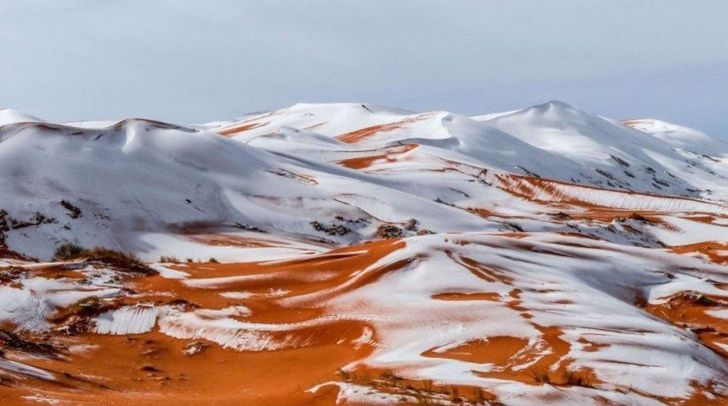
It seems humanity will soon get used to this phenomenon, which is, unfortunately, not the norm.
A Siberian tiger came out of a forest to find food.
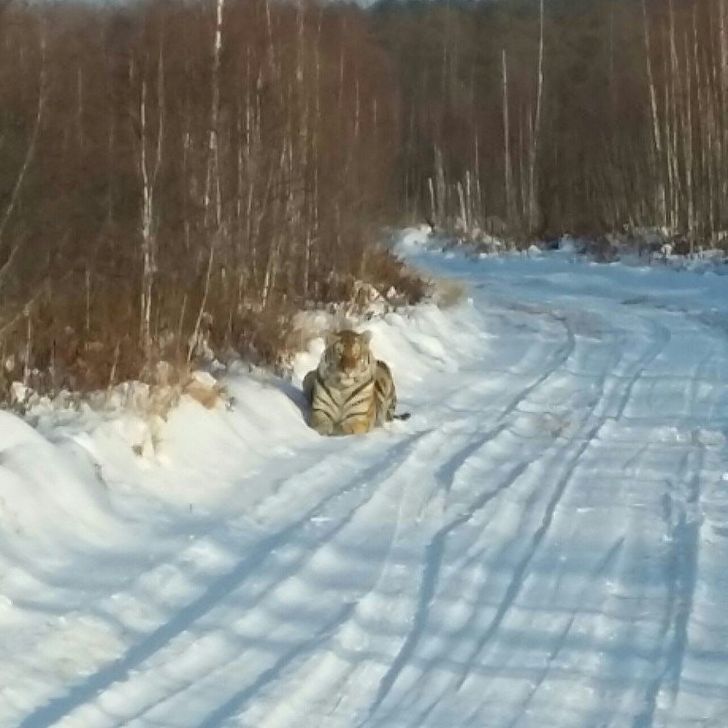
Due to poaching and illegal hunting, the Amur tigers started to come out on roads hoping for a misstep of people that would provide them with food. Tigers aren’t the only animals doing this. Many different starving wild animals have to adapt to these new living conditions. Unfortunately, the extermination of forests is another global problem that threatens our world.
Felling of tropical forests in Brazil
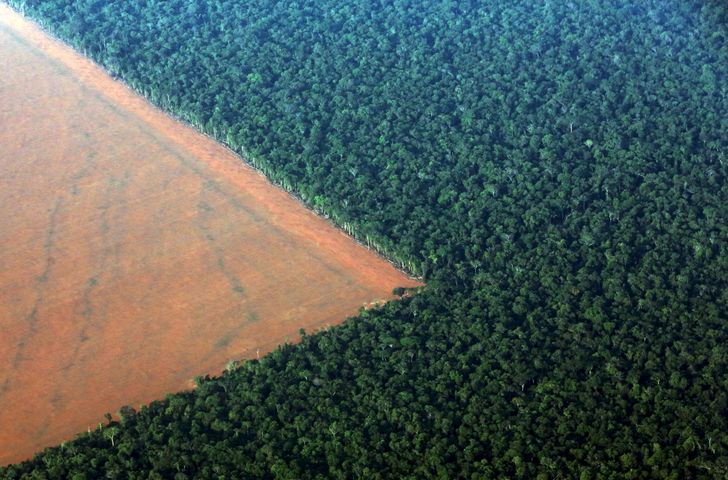
If the loss of agricultural land was compensated by deforestation, there would be almost no forests left. If humanity keeps its current pace of deforestation, all forests will be destroyed by 2040.
A bright billboard drowning in a thick smog in China
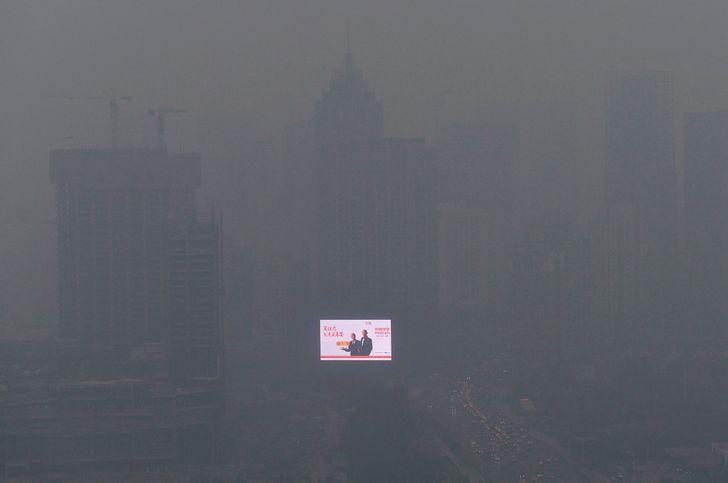
Rapid industrial development causes 85% of people on our planet to breathe in polluted air.
This pink color appeared in one of Russia’s city reservoirs.
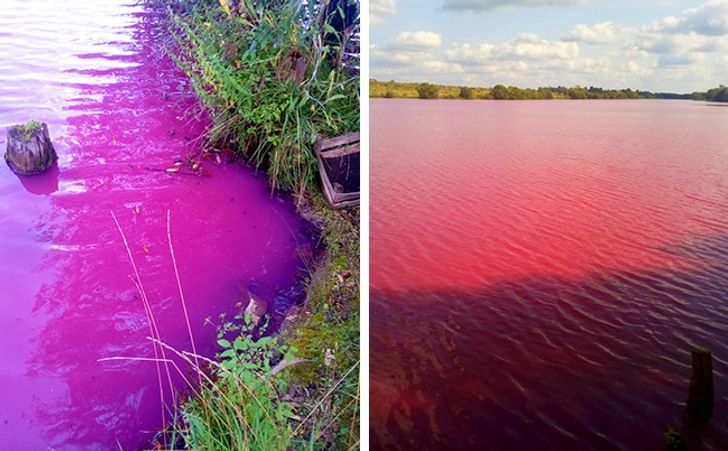
The change in the chemical composition of the atmosphere causes the formation of acid rain. It poisons the environment and contaminates soil and water reservoirs.
An overcrowded beach in Rio de Janeiro
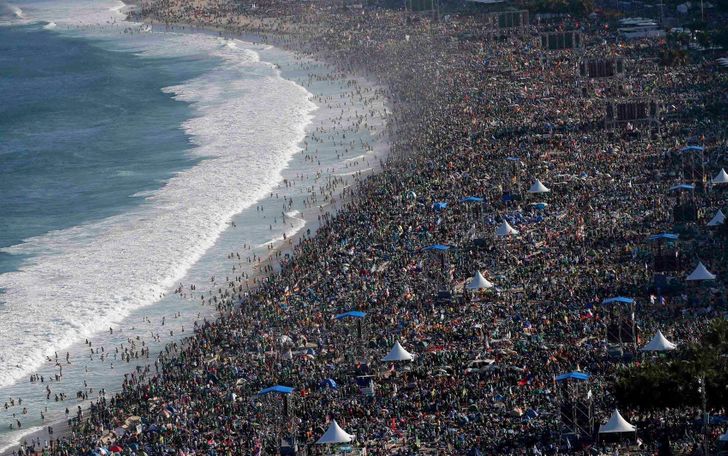
According to scientists’ forecasts, the Earth’s population will reach 9 billion people by 2030. Just think about it: 101 years ago in 1927, the population of the planet was only 2 billion.
A polar bear dying of hunger on the Arctic Ocean shore
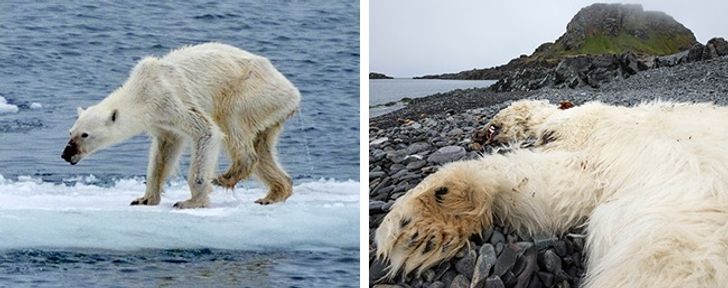
These photos of a starving polar bear are the best display our planet’s global warming problem. Polar bears hunt for seals from sea ice floes. But each year, the amount of ice decreases, which means that these wild animals have to live off fat stores that accumulated during winter when the formation of ice happens naturally.
A huge oil spot has formed as a result of an explosion of an oil platform in 2010.
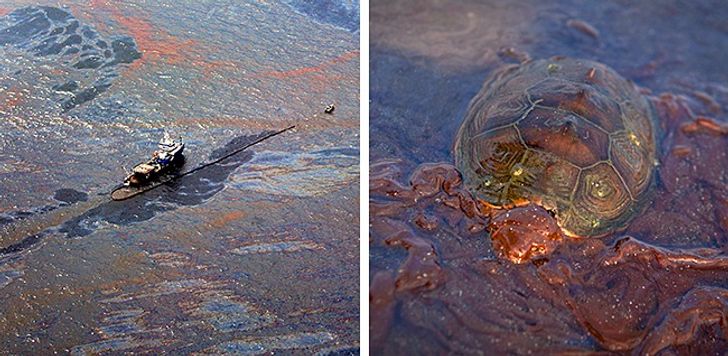
Every year, more than 12 million tons of oil get dumped into the world’s oceans. It happens due to the leakage of oil from damaged wells and tankers. About 25% of seawater is covered with a layer of oil varying in thickness. In 2010, an explosion of The Deepwater Horizon oil platform resulted in the leakage of 1000 tons of oil into the ocean. The British Petroleum company has spent billions of dollars to eliminate the substance but despite all efforts, they could only remove 75% of the combustible substance.
This photo of a seahorse holding a Q-tip shows the real condition of today’s ocean.
260 million tons of plastic debris get into the ocean annually, resulting in the formation of huge plastic continents. The biggest one is located in the Pacific Ocean taking up 10% of its surface.
Whales choke on plastic debris.
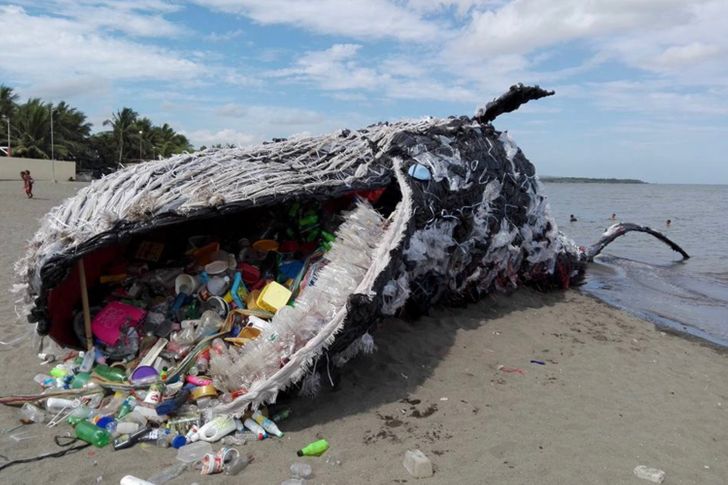
The problem of plastic pollution in the seas and oceans is becoming more serious every year. There have been cases of whales choking on plastic debris and washing ashore. To raise awareness of this, people of The Greenpeace Philippines installed a replica of a dead whale on one of the beaches in South Manila. The entire installation was made from the plastic wreck found in the ocean’s waters.
How do humans help the planet?
Humans are starting to take global environmental problems more and more seriously. Wildlife reserves and charitable foundations are created to support nature. Governments allot money for preserving flora and fauna and adopt laws for the sake of nature. Scientists are also contributing greatly, and keep working on creating better conditions for the future of our planet. All these things give us hope that the negative predictions of what will become of our earth won’t come true.
Have you ever noticed any abnormalities in nature where you live? Please tell us about them in the comments!

